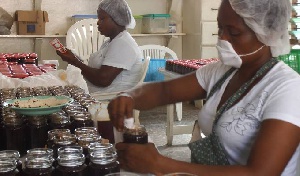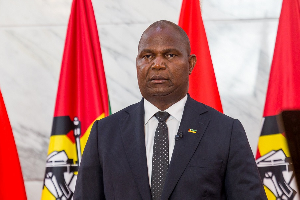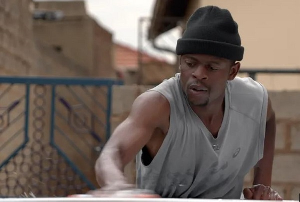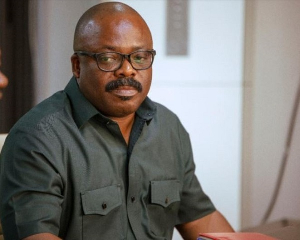Erratic power supply, high inflation, high taxes, exchange rate volatility, and the high cost of credit, among a host of other business crippling factors, led the industrial sector down a negative growth path last year.
Quarterly GDP figures released by the Ghana Statistical Service (GSS) last week show that the sector recorded a year-on-year annual GDP growth rate of -1.4% for 2016.
The sector recorded -1.1 and -5 percent growth in the first two quarters of last year.
Even though the situation improved to 3.9 percent and 3.0% in the third and fourth quarters respectively, it could not reverse the overall year-on-year downtown, as compared to the 1.2% recorded in 2015.
The manufacturing sub-sector, the figures show, recorded the lowest growth of -1.1% in quarter 4, although it ended the year at 2.7%.
Whilst most of the sub-sectors are struggling, the electricity sub-sector, which has seen a lot of investment and for which tariffs have increased exponentially, recorded a year-on-year growth of 11.7% as against -10.7% for the mining and quarrying sub-sector, for example.
The oil and gas sub-sector recorded -16.9% whilst the water and sewerage sub-sector recorded -3.2% year-on-year.
Although some have argued it is only natural that once the services sector experiences a boom, the industrial sector would plunge, industrialists bemoan the lack of appropriate government policies to prop up industrialisation.
The new government has just announced a GH¢100million “stimulus package” to help revive so-called “distressed” companies that have been battered by macroeconomic drawbacks.
As recently as 2011, the industrial sector, as compared to agriculture and services, was the largest contributor to GDP, as it grew at a rate of 19.2% in the first quarter of that year, then skyrocketed to 42.5 percent in the second quarter and further jumped to 54.4 and 50.7% in the last two quarters respectively.
Even though the sector outshined the agricultural sector, its contribution of 24.2% to gross GDP is a far cry from the 53.2% recorded by the services sector, which also grew at a rate of 6.3%.
The Association of Ghana industry has persistently warned that if deliberate policies are not made by government to revive the manufacturing sub-sector, the industrial sector will continue to shrink and Ghana risks losing its industrial base.
One district, one factory to the rescue?
One major project the government seeks to use to overturn the fortunes of industry is the One District, One Factory project.
The project has widely attracted interest from investors ever since the NPP government took over office in January 2017. In February, the CEO of the Ghana Investment Promotion Council (GIPC), Yofi Grant, said investors had inundated his office to inquire about the district policies.
“The one-district, one-factory content has sparked very interesting discussions and interests from investors both here and abroad. There are a lot of people who are now asking questions about what they can do, where they can find information about what is available in the districts in terms of raw materials. Some, too, are asking about demographics. Some are also asking about incentives that might be available to investors once they invest in the rural areas etc.” Mr. Grant said.
Following the budget presentation in March, parliament has approved GHC456 million for the implementation of the district factories project.
National Coordinator of the One District One Factory Secretariat, Gifty Ohene-Konadu, also told the media that “The program has so far generated investment pledges and commitments to a tune of three billion dollars (US$3billion). These are pledges made from local and foreign investors,” she said.
She further stated that a total of 40 business plans are currently being reviewed, with many coming from the agro-sector.
According to Mrs. Ohene-Konadu, financial support for the programme will range from US$5, 000 to US$5 million, depending on project size and operational categorization; with an exit plan that allows the government to sell its equity stake on the Ghana Alternative Market (GAX) after a five-year period.
She announced that the project will take-off fully by mid-year, with ten factories expected to be inaugurated to mark the official commencement.
Business News of Monday, 8 May 2017
Source: thebftonline.com













